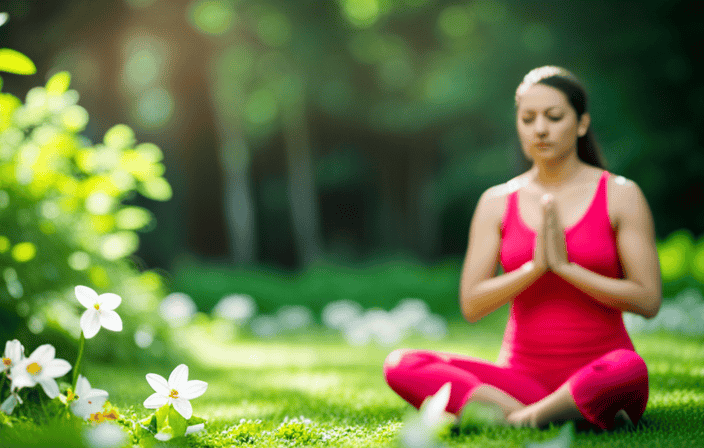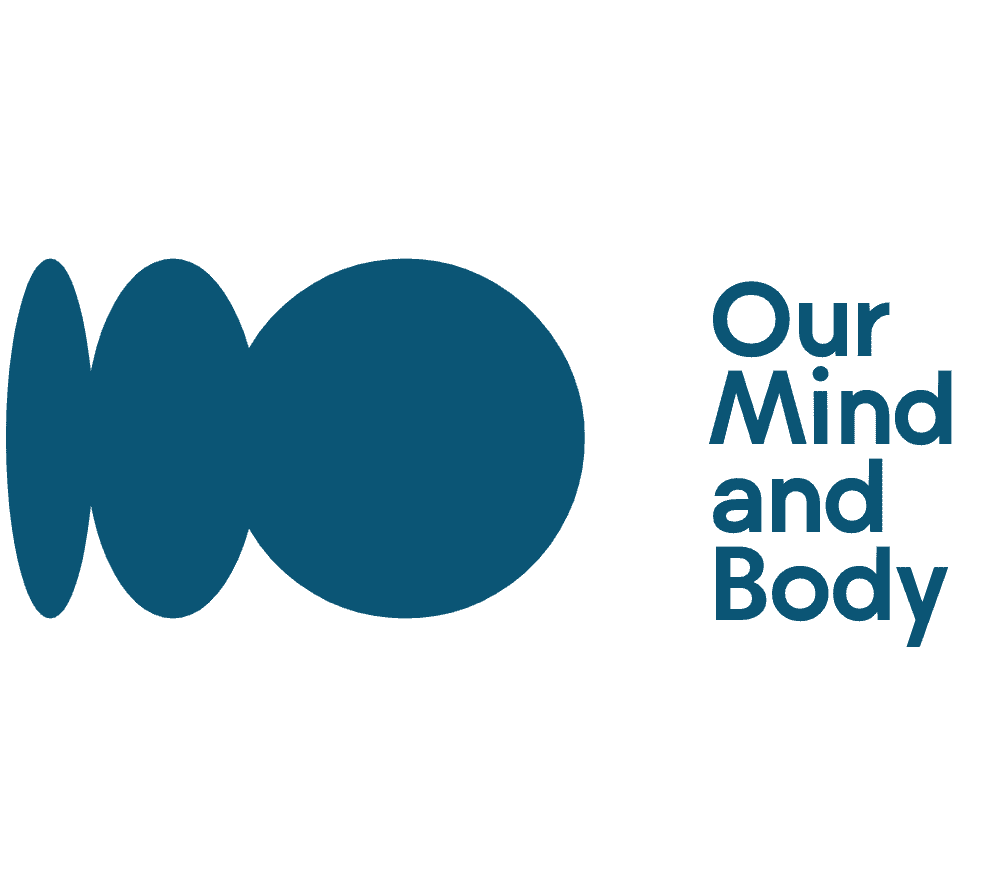Mindfulness
Bringing Mindfulness To Everyday Life: Enhancing Focus, Reducing Stress

Imagine a world where you can find tranquility in the midst of chaos, concentration amid distractions, and serenity amidst stress. This world is not just a far-off dream, but a tangible reality that can be attained through the practice of mindfulness.
By simply noticing our breath, surroundings, feelings, and thoughts, we can bring a sense of tranquility and contentment to our everyday lives.
In this article, we will explore the power of mindfulness and how it can enhance our focus, reduce stress, and lead to a more fulfilling existence.
Welcome to the journey of bringing mindfulness to everyday life.
Key Takeaways
- Mindfulness enhances the present moment experience and increases engagement and focus.
- Engaging in routine tasks mindfully can reduce stress and distractions.
- Cultivating mindfulness in daily activities allows for a deeper connection with oneself and promotes overall well-being.
- Bringing mindfulness into everyday life can enhance focus, reduce stress, and cultivate a sense of peace and relaxation.
What is mindfulness?
I notice that mindfulness is about being present and aware of my breath, surroundings, feelings, and thoughts. This helps to reduce stress and bring a sense of peace and calmness to my everyday life.
It’s amazing how simply paying attention to the small things, like the sound of birds chirping or the feeling of my feet on the ground, can instantly bring me a sense of tranquility.
Mindfulness allows me to fully engage with the present moment, rather than getting caught up in worries about the past or future. It’s a practice that brings clarity and focus to my mind, helping me to better navigate the challenges of daily life.
Through mindfulness, I am able to cultivate a deeper connection with myself and the world around me. This ultimately enhances my overall well-being.
Benefits in daily life
Incorporating mindfulness into daily activities promotes a sense of calm and overall well-being. When I bring mindfulness to my everyday life, I am able to focus more on the present moment and let go of stress and distractions.
By taking a few moments to pause and notice my breath, surroundings, and sensations, I am able to cultivate a sense of peace and clarity. Mindfulness allows me to fully engage in routine tasks, such as washing the dishes or walking in nature, with a heightened sense of awareness and appreciation. It reminds me to slow down and savor the small moments in life, like the warmth of sunlight on my skin or the taste of a delicious meal.
By incorporating mindfulness into my daily life, I am able to navigate challenges with greater resilience and kindness towards myself and others.
Mindfulness in education
Implementing mindfulness in education enhances students’ focus and emotional well-being. By incorporating mindfulness practices into the school curriculum, students are given the opportunity to develop important life skills that go beyond academic achievement.
Mindfulness helps students become more present in the classroom, allowing them to fully engage in their learning and overcome distractions. It also promotes emotional regulation, helping students manage stress and develop resilience.
Through mindfulness, students learn to cultivate a sense of compassion and empathy towards themselves and others, creating a more positive and supportive learning environment. By teaching mindfulness in schools, we are equipping students with valuable tools that they can carry with them throughout their lives, helping them navigate challenges with clarity and compassion.
Mindfulness at work
Practicing mindfulness at work allows me to stay present and focused, resulting in a more calm and productive work environment. When I am mindful, I am able to fully engage in my tasks and give them my undivided attention. This not only improves the quality of my work but also reduces stress and overwhelm.
Here are three ways mindfulness enhances my work experience:
-
Taking short breaks for mindfulness exercises helps me recharge and refocus. It allows me to step away from the busyness and bring my attention back to the present moment.
-
Addressing distractions with mindfulness helps me maintain a sense of calm and clarity. Instead of getting caught up in the noise and interruptions, I can choose to respond with intention and focus.
-
Actively practicing mindfulness during meetings and interactions with colleagues allows me to truly listen and connect. This strengthens relationships and fosters a collaborative work environment.
By incorporating mindfulness into my workday, I am able to navigate challenges with greater ease and find joy in the present moment.
Mindfulness with family
When I am mindful with my family, I am able to fully engage in meaningful conversations and create stronger connections. Being present and actively listening to my loved ones allows me to understand their needs, emotions, and experiences on a deeper level. It helps me to appreciate the little moments and create a nurturing and supportive environment for everyone. Mindfulness also enables me to respond to conflicts and challenges with compassion and empathy, rather than reacting impulsively. By practicing mindfulness with my family, I am fostering a sense of togetherness and building a foundation of trust and understanding. It is truly a gift to be fully present and connected with the ones I love.
| Mindfulness with Family | Benefits |
|---|---|
| Active listening | Enhances understanding and empathy |
| Creating a nurturing environment | Fosters emotional well-being |
| Responding with compassion | Strengthens relationships |
| Appreciating the little moments | Cultivates gratitude |
| Building trust and understanding | Creates a sense of togetherness |
Mindfulness apps and resources
Using mindfulness apps and resources allows me to easily incorporate mindfulness into my daily routine and access a wide range of guided meditations and exercises. These apps provide convenience and accessibility, making it effortless for me to practice mindfulness wherever and whenever I want.
Here are four ways mindfulness apps and resources have enhanced my mindfulness journey:
-
Guided Meditations: These apps offer a variety of guided meditations that help me focus on my breath, body sensations, and thoughts. The soothing voices and calming music guide me into a state of relaxation and presence.
-
Mindfulness Exercises: The apps also provide exercises that I can integrate into my daily activities, such as mindful eating or walking. These exercises help me stay present and fully engage with the task at hand.
-
Progress Tracking: Many apps have features that allow me to track my progress and set reminders for regular mindfulness practice. This motivates me to stay consistent and observe my personal growth over time.
-
Community Support: Some apps provide a community platform where I can connect with like-minded individuals, share experiences, and seek guidance. This sense of community support encourages me to continue my mindfulness journey and learn from others.
Overall, mindfulness apps and resources have been invaluable tools in enhancing my focus, reducing stress, and cultivating a greater sense of peace and well-being in my everyday life.
Incorporating mindfulness in routine tasks
Incorporating mindfulness into my routine tasks allows me to find calmness and presence in the midst of my daily activities. Whether it’s washing dishes, folding laundry, or even brushing my teeth, I have discovered that these seemingly mundane tasks can be transformed into moments of peace and self-reflection. By bringing my awareness to the present moment, I am able to fully engage with each action, observing the sensations, thoughts, and emotions that arise without judgment. This simple practice has brought a sense of clarity and focus to my daily life, reducing the distractions and anxieties that often accompany my tasks.
To emphasize the benefits of incorporating mindfulness into routine tasks, consider the following table:
| Task | Mindful Approach |
|---|---|
| Washing dishes | Pay attention to the warmth of the water, the sound of the bubbles, and the feel of the dishes in your hands. |
| Folding laundry | Notice the texture and scent of the clothes, and take your time to fold each item mindfully. |
| Brushing teeth | Focus on the sensation of the bristles against your teeth, the taste of the toothpaste, and the rhythm of your brushing. |
| Making the bed | Feel the smoothness of the sheets, notice the way the blankets fall, and take a moment to appreciate the comfort of your bed. |
| Cooking a meal | Engage all your senses – smell the aromas, feel the textures, taste the flavors, and savor each bite mindfully. |
Incorporating mindfulness into routine tasks has allowed me to infuse my day with a sense of calm and purpose. It has become a reminder to slow down, appreciate the present moment, and find joy in the simplest of activities.
Promoting calmness and well-being
Practicing mindfulness in my daily routine tasks brings a sense of calmness and well-being to my life. When I approach these tasks with a mindful presence, I am able to fully engage in the present moment and let go of any distractions or worries.
Whether it’s washing the dishes, folding laundry, or even brushing my teeth, I find that taking the time to be fully present enhances the experience. I notice the feeling of warm water on my hands, the scent of freshly laundered clothes, or the sensation of the toothbrush against my teeth.
These seemingly mundane activities become opportunities for me to reconnect with myself and find peace in the simplicity of the task at hand. By incorporating mindfulness into my routine tasks, I am able to cultivate a greater sense of calmness and well-being throughout my day.
Frequently Asked Questions
How can mindfulness be incorporated into routine tasks to enhance daily life?
Incorporating mindfulness into routine tasks enhances daily life by bringing focus and reducing stress. By intentionally paying attention to each activity, I am able to fully engage in the present moment and find calmness in the midst of busyness.
What are some strategies for promoting calmness and overall well-being through mindfulness?
Some strategies for promoting calmness and overall well-being through mindfulness include daily meditation, deep breathing exercises, and taking mindful breaks throughout the day. These practices help to reduce stress and enhance focus in everyday life.
How can mindfulness be integrated into education to promote focus and learning?
To integrate mindfulness into education, we can introduce mindfulness practices such as breathing exercises and mindful listening. These practices promote focus, reduce stress, and enhance learning by cultivating awareness and emotional well-being in students.
What are some practical ways to practice mindfulness at work and address distractions?
To practice mindfulness at work, I start by taking deep breaths and grounding myself in the present moment. I prioritize tasks and take breaks to clear my mind. Addressing distractions with kindness and focus helps me stay calm and focused.
What are some recommended mindfulness apps and resources for beginners?
Some recommended mindfulness apps for beginners include Headspace, Calm, and Insight Timer. These apps offer guided meditations, exercises, and tools to enhance focus and reduce stress. They provide convenience and accessibility for regular practice.
Conclusion
In conclusion, I have found that bringing mindfulness to everyday life is a transformative practice that can greatly enhance our well-being. By incorporating mindfulness into our daily routines, we can experience a sense of calmness and focus, reducing stress and improving our overall quality of life.
As the saying goes, ‘In the midst of movement and chaos, keep stillness inside of you.’ Embracing mindfulness allows us to find stillness amidst the chaos, bringing us a sense of tranquility and contentment.
So, let us embark on this journey of mindfulness and discover the profound impact it can have on our lives.
Say hello to Cypress, the soulful wordsmith behind the insightful articles at OurMindAndBody.com. Cypress is a gifted writer who weaves words with grace and precision, using language as a powerful tool to inspire, heal, and uplift the spirits of readers.
With a background in literature and a passion for personal growth, Cypress brings a unique perspective to the world of well-being and spirituality. Having experienced the transformative effects of meditation and yoga firsthand, Cypress is deeply connected to the essence of these practices and their potential to enrich lives.
Mindfulness
The Spiritual Significance Of Proper Hair Disposal

Have you ever considered the spiritual significance of properly disposing of hair?
From donating hair as a symbol of letting go of negative energy to burying it for growth and giving back to the earth, different cultures and spiritual traditions have unique beliefs and practices surrounding hair disposal.
This article explores the importance of researching reputable institutions for hair donation, alternative methods of hair disposal, and the spiritual energy that hair holds.
Join me as we delve into the depths of this fascinating topic.
Key Takeaways
- Hair donation is seen as a spiritual act of relinquishing negative energy and undergoing a spiritual transition.
- It is important to research and find reputable institutions for hair donation to ensure a meaningful impact.
- Alternative methods of hair disposal include burying hair for growth, burning hair for transformation or purification, and using hair in rituals or for making wigs.
- Proper hair disposal is important to show respect for the spiritual significance of hair and to prevent environmental harm.
Beliefs and Practices
I believe that understanding the beliefs and practices surrounding hair donation and alternative methods of hair disposal is crucial when it comes to honoring the spiritual significance of proper hair disposal.
In many spiritual rituals and cultural traditions, hair holds deep symbolic meaning and energy. It is seen as a representation of vitality, strength, and even negative energy that needs to be relinquished.
Hair donation is often considered a voluntary act of charity, where individuals choose to give their hair as a symbol of spiritual transition and to support those in need.
Additionally, alternative methods of hair disposal such as burying or burning are seen as ways to give back to the earth or to symbolize transformation and purification.
By respecting these beliefs and practices, we can ensure that we are properly honoring the spiritual significance of hair disposal.
Alternative Methods
Burying or burning your locks can be seen as a unique way to embrace change and transformation, allowing the earth or the flames to take your hair on a journey beyond its physical form. When deciding between burying or burning your hair, it is important to consider your personal beliefs and the symbolism behind each method. Burying hair is often associated with growth and giving back to the earth. It is believed that by burying your hair, you are returning its energy to the ground, allowing it to be absorbed and nourish new life. On the other hand, burning hair is often seen as a symbol of purification and transformation. The flames carry the energy of your hair to the heavens, releasing it from its physical form and allowing it to undergo a spiritual transition.
| Burying | Burning |
|---|---|
| Associated with growth and giving back to the earth | Symbol of purification and transformation |
| Energy is returned to the ground | Energy is carried to the heavens |
| Nourishes new life | Allows for a spiritual transition |
In addition to these alternative methods, hair can also be used in rituals or donated for making wigs. Donating hair for wig-making purposes is a meaningful way to support individuals who have lost their hair due to medical conditions like cancer. It allows them to regain their confidence and feel more like themselves. Rituals involving hair cutting may also require a specific method of disposal that reflects the nature of the ritual itself. It is important to respect diverse cultures and beliefs when deciding how to dispose of hair, ensuring that it is done in a manner that is appropriate and meaningful to the individual and their spiritual journey.
Facts and Statistics
Burning hair as a method of disposal carries the energy of the hair to the heavens, symbolizing purification and transformation. This act holds great spiritual significance, as it represents the release of negative energy and the invitation of positive change.
It is essential to approach hair disposal with intention, setting clear intentions for the energy to be released and transformed.
Additionally, hair donation plays a significant role in supporting cancer patients. Organizations like Locks of Love provide wigs for those undergoing chemotherapy, giving them a sense of normalcy and confidence during a challenging time. By donating our hair, we contribute to a noble cause and make a meaningful impact on someone’s life.
The act of proper hair disposal, whether through burning or donation, holds immense cultural and spiritual significance, reflecting our respect for the sacred nature of hair and its energy.
Frequently Asked Questions
Is there a specific time or day considered auspicious for hair disposal in different spiritual traditions?
In different spiritual traditions, the auspiciousness of a specific time or day for hair disposal varies. However, the importance of hair in spiritual rituals and the symbolism of hair disposal in different religious practices remain consistent.
Are there any rituals or prayers that should be performed before disposing of hair spiritually?
Before disposing of hair spiritually, it is important to perform rituals or prayers to honor the spiritual significance of hair offerings. This acknowledges the symbolism of hair in various religious practices and deepens the spiritual connection.
Are there any specific guidelines for handling or storing cut hair before it is properly disposed of?
When it comes to handling and storing cut hair before its proper disposal, it is important to follow certain guidelines. This includes keeping it clean and dry, storing it in a secure container, and handling it with care to preserve its spiritual energy.
Are there any consequences or negative effects believed to occur if hair is not disposed of properly?
If hair is not disposed of properly, consequences and negative effects can be believed to occur according to certain beliefs. These may include the retention of negative energy, spiritual imbalance, and disrespect towards the sacredness of hair.
Are there any cultural taboos or restrictions regarding the handling or disposal of hair in certain communities?
In certain communities, there are cultural taboos and restrictions regarding the handling and disposal of hair. These beliefs stem from the power attributed to hair in different cultures and the historical practices of hair disposal in various spiritual traditions.
Conclusion
In conclusion, the spiritual significance of proper hair disposal is a topic that highlights the importance of respect and reverence for hair in various cultures and spiritual traditions.
Through the act of donating hair, individuals can symbolize their transition and release negative energy.
Alternative methods such as burial, burning, or using hair in rituals offer different ways to honor the spiritual energy that hair holds.
It is crucial to research and choose reputable institutions for hair donation to make a meaningful impact and support those in need.
By setting intentions and expressing gratitude, we can ensure that our hair disposal is done with mindfulness and respect.
Overall, proper hair disposal is a way to show our appreciation for the spiritual significance of hair while avoiding harm and making a positive contribution.
Meet Kalinda, the passionate and visionary Editor-in-Chief of OurMindAndBody.com. Kalinda is a beacon of light in the realm of holistic well-being, and her mission is to positively impact the lives of others by inspiring them to embrace a healthier and more fulfilling lifestyle.
With a deep-rooted love for meditation, yoga, and spirituality, Kalinda’s journey toward self-discovery and personal growth started at a young age. She found solace and strength in these practices, which not only helped her cope with the challenges of life but also provided her with a profound sense of purpose. Eager to share the transformative power of these ancient disciplines, Kalinda embarked on a path to spread awareness and understanding.
Mindfulness
The Spiritual Significance Of Blue Jays: Communication And Adaptability

Ironically, in the vast expanse of the natural world, it is often the smallest and most inconspicuous creatures that hold the greatest spiritual significance.
Such is the case with the blue jay, a bird whose vibrant plumage and sharp intelligence belie its true power.
In this article, we will explore the profound symbolism of the blue jay, diving into its role as a messenger of communication and adaptability.
Prepare to be captivated by the hidden depths of this seemingly ordinary creature, and discover the profound lessons it has to offer.
Key Takeaways
- Blue jays symbolize intelligence, communication, and protection in Native American culture.
- They are associated with adaptability and resourcefulness, and are seen as sacred messengers bringing messages of balance.
- Blue jays signify the importance of clearer thinking and better communication with others, and encourage speaking one’s truth and embracing inner wisdom.
- They are also a sign of good luck and prosperity, representing spiritual growth and personal development, and guiding towards embracing one’s inner truth and wisdom.
What Blue Jays Symbolize
Blue jays symbolize clear thinking, communication, and adaptability. These qualities are spiritually significant to me. The symbolic meaning of blue jays speaks to me deeply. They are messengers of wisdom and balance. When I see a blue jay, I am reminded of the importance of expressing myself honestly and openly, embracing my inner truth. They remind me to communicate effectively with others, fostering understanding and connection. Blue jays also symbolize adaptability, teaching me to navigate through life’s challenges with grace and flexibility. Their presence reminds me to be resourceful and find creative solutions. The spiritual messages of blue jays resonate with my soul. They guide me towards clearer thinking, improved communication, and the ability to embrace change with resilience and strength.
Native American Beliefs
Immersing myself in the rich tapestry of Native American beliefs, I am captivated by the profound symbolism attributed to the majestic blue jay. Particularly, its role as a messenger between realms and its association with wisdom and balance.
Native American rituals often incorporate blue jay feathers, recognizing their spiritual significance and the messages they carry. These vibrant feathers are seen as sacred gifts, guiding us towards a deeper understanding of ourselves and our connection to the spiritual world.
When a blue jay crosses our path or leaves a feather in our presence, it is believed to be a spiritual message. It urges us to embrace our inner wisdom and seek balance in our lives.
This sacred bird reminds us of the importance of clear communication and adaptability. It encourages us to navigate life’s challenges with grace and flexibility.
The blue jay is a powerful symbol that invites us to embrace its teachings and embark on a journey of spiritual growth and enlightenment.
Clear Thinking and Expression
When I observe the behavior of the blue jay, I am reminded of the importance of clear thinking and expressing myself effectively. This magnificent creature teaches me that in order to navigate through life’s challenges, I must improve my communication skills and embrace my inner wisdom.
Just like the blue jay, I have the power to speak my truth and express myself creatively. It is through clear communication that I can connect with others on a deeper level and foster understanding. By embracing my inner wisdom, I can tap into my intuition and make decisions that align with my authentic self.
The blue jay’s presence serves as a gentle reminder to always strive for clear thinking and to express myself in a way that resonates with my soul.
Good Luck and Prosperity
Luckily for me, stumbling upon a blue jay is like finding a four-leaf clover – a sign that good fortune and prosperity are on their way. Blue jay sightings as omens have been revered in different cultures throughout history. Their symbolism as bringers of luck and abundance is a testament to their spiritual significance.
A messenger from the heavens: The blue jay is seen as a sacred messenger, bringing messages of balance and harmony from the spirit world. Its vibrant blue feathers symbolize spiritual growth and personal development.
Embracing inner truth and wisdom: The blue jay guides us towards embracing our inner truth and wisdom. Its presence reminds us to speak our truth and express ourselves creatively, unlocking the power of the throat chakra.
Prosperity and abundance: The blue jay represents the power of light and knowledge, guiding us towards prosperity and abundance. Its adaptability and resourcefulness remind us to navigate life’s challenges with flexibility, transforming them into opportunities for growth.
Incorporating the spiritual energy of blue jays into our lives opens the door to a world of luck, wisdom, and prosperity.
Adaptability and Resourcefulness
Navigating through life’s challenges with flexibility, the blue jay’s resourcefulness reminds me of the power of transformation and grace.
The Blue Jay’s versatility is truly awe-inspiring. It effortlessly adapts to different environments, thriving wherever it finds itself. This adaptability serves as a powerful reminder that we too have the ability to navigate through life’s ups and downs with resilience.
The Blue Jay’s resourcefulness is equally remarkable. It teaches us the importance of being creative and finding solutions in the face of adversity. When we encounter obstacles, we can look to the Blue Jay as a symbol of strength and ingenuity. It guides us to tap into our inner resourcefulness, reminding us that we have the power to transform challenges into opportunities for growth.
The Blue Jay’s adaptability and resourcefulness inspire us to embrace change, knowing that it is through flexibility that we can truly soar.
Frequently Asked Questions
How can I connect with the spiritual energy of blue jays in my daily life?
To connect with the spiritual energy of blue jays in my daily life, I engage in daily mindfulness practices and spend time connecting with nature. I reflect on their symbolism and incorporate blue jay imagery or feathers into my spiritual practices.
What are some practical ways to improve my communication skills, as symbolized by the blue jay?
Improving my communication skills is like unlocking a treasure chest of connection and understanding. I actively practice effective listening techniques, such as being fully present and empathetic. I also pay attention to the power of nonverbal communication, using body language and eye contact to enhance my message.
Can blue jays bring messages from the spirit world to individuals?
Blue jays, with their spiritual significance, can bring messages from the spirit world to individuals. They serve as sacred messengers, bridging the gap between realms, delivering messages of balance, wisdom, and guidance. Embrace the wisdom they offer.
How does the symbolism of blue jays relate to personal transformation and growth?
Blue jays, symbols of transformation and growth, remind me of my own journey. Their adaptability teaches me to navigate life’s challenges with grace, while their communication skills inspire personal development. They are my guiding light on this transformative path.
Are there any specific rituals or practices associated with incorporating blue jay imagery or feathers into spiritual practices?
Blue jay symbolism in Native American traditions encompasses the power of communication and adaptability. Incorporating blue jay feathers in spiritual ceremonies can enhance our connection to these qualities, aiding in personal transformation and growth.
Conclusion
In conclusion, the spiritual significance of blue jays is truly awe-inspiring. These beautiful creatures embody the essence of communication and adaptability. They remind us of the power of clear thinking and expression, urging us to find balance and harmony in our lives.
Blue jays bring with them messages of good luck and prosperity, encouraging us to embrace spiritual growth and personal development. Their adaptability and resourcefulness show us the importance of being flexible in the face of challenges.
So let us spread our wings like the blue jays, and soar towards transformation and grace. As the saying goes, "When life gives you lemons, make lemonade."
Meet Kalinda, the passionate and visionary Editor-in-Chief of OurMindAndBody.com. Kalinda is a beacon of light in the realm of holistic well-being, and her mission is to positively impact the lives of others by inspiring them to embrace a healthier and more fulfilling lifestyle.
With a deep-rooted love for meditation, yoga, and spirituality, Kalinda’s journey toward self-discovery and personal growth started at a young age. She found solace and strength in these practices, which not only helped her cope with the challenges of life but also provided her with a profound sense of purpose. Eager to share the transformative power of these ancient disciplines, Kalinda embarked on a path to spread awareness and understanding.
Mindfulness
Choosing The Perfect Cannabis Strain For Relaxation

As cannabis gains popularity for its calming effects, it is crucial to understand the different strains available and their unique effects. Just as everyone has their preferred flavors, cannabis strains vary greatly, from the relaxing properties of indica varieties to the energizing effects of sativa strains.
Dispensary staff can provide valuable guidance based on personal needs and preferences. Factors such as THC and CBD levels should be considered, as they contribute to the desired effects.
Experimentation with different strains and consumption methods, along with an open-minded approach, will ultimately lead to finding the perfect cannabis strain for relaxation.
Key Takeaways
- Different cannabis strains have different effects on the body and mind.
- Seek guidance from dispensary staff who can provide recommendations based on your needs.
- Consider the THC and CBD levels in different strains to find the right ratio for relaxation.
- Experiment with different strains and consumption methods to find the most relaxing experience.
Different Strains and Effects
Different strains of cannabis have varying effects on the body and mind. Indica strains are known for their relaxing and sedative properties, while sativa strains are energizing and uplifting. Hybrid strains offer a combination of both. When choosing a cannabis strain for relaxation, it is important to consider the different options available. Indica strains are commonly recommended for relaxation due to their calming effects, while sativa strains are known for their uplifting properties. Hybrid strains can provide a balance between relaxation and energy. Understanding the effects of each strain can help individuals make an informed decision based on their desired outcome. By considering the effects on the body and mind, individuals can choose a strain that promotes relaxation and meets their personal preferences.
Seeking Guidance from Dispensary
Dispensary staff, with their extensive knowledge and expertise, are an invaluable resource for obtaining guidance in the selection of an optimal cannabis strain to achieve a state of utmost relaxation. They can provide recommendations based on your specific needs and preferences, ensuring that you find the strain that suits you best. By utilizing their expertise, you can make an informed decision and explore different options. Don’t hesitate to ask questions and seek their advice, as they can offer valuable insights into the effects and characteristics of different strains. It’s important to be open-minded and try different strains, as what works for one person may not work for another. By experimenting and taking note of how different strains affect your relaxation experience, you can find the perfect cannabis strain that promotes a sense of calm and tranquility.
| Dispensary Recommendations | Utilizing Staff Expertise |
|---|---|
| – Dispensary staff can provide recommendations based on your needs | – Utilize their knowledge and expertise |
| – Don’t hesitate to ask questions and try different options | – It’s okay to change your mind and try something else |
Considering THC and CBD Levels
When selecting a cannabis strain for relaxation, it is important to consider the levels of THC and CBD present in the strain, as these compounds have varying effects on the body and mind. THC, or tetrahydrocannabinol, is the psychoactive component of cannabis that produces a high. CBD, or cannabidiol, on the other hand, is known for its relaxing effects. Finding the right balance between THC and CBD levels is crucial in achieving the desired relaxation experience.
To better understand the effects of THC and CBD levels, consider the following:
- Strains with higher THC levels tend to be more potent and may induce a stronger high.
- Strains with higher CBD levels are known for their calming and soothing effects.
- Some individuals may prefer a strain with a higher THC to CBD ratio for a more euphoric and relaxing experience.
- Others may opt for a strain with a balanced THC to CBD ratio to achieve a milder and more balanced relaxation effect.
By considering the THC and CBD levels in a cannabis strain, individuals can find the right balance that suits their personal preferences and relaxation needs.
Experimenting with Different Strains
To explore a range of options, individuals can engage in a process of trial and error by experimenting with various cannabis strains to find the most suitable one for their relaxation needs. Trying different strains allows individuals to assess the effects of each strain on their body and mind.
It is important to start with a small dosage and gradually increase to find the optimal level that promotes relaxation without overwhelming effects. Additionally, individuals should take note of the THC and CBD levels in different strains and how they contribute to their relaxation experience.
This information can help in identifying the strain with the desired THC and CBD ratio. By being open to trying different strains and finding the right dosage, individuals can determine the most effective cannabis strain for their relaxation goals.
Considering Personal Preferences
Considering individual preferences such as taste, aroma, and desired effects is crucial when selecting the most suitable cannabis strain for achieving a state of relaxation.
Exploring flavor preferences allows individuals to find strains that align with their specific taste preferences, enhancing their overall experience. Some may prefer fruity or sweet flavors, while others may gravitate towards earthy or herbal tastes.
Additionally, trying new aromas can add another layer of enjoyment to the relaxation experience. Strains with floral or citrusy scents may be appealing to some, while others may prefer more pungent or spicy aromas.
By taking personal preferences into account, individuals can personalize their cannabis experience and find the strain that not only promotes relaxation but also provides a sensory experience that is enjoyable to them.
Trying Different Consumption Methods
Exploring a variety of consumption methods allows individuals to discover different ways to experience the effects of different cannabis strains. By trying out alternative methods, individuals can compare the effects of each method and determine which one provides the most relaxation.
Some common consumption methods include smoking, vaporizing, and consuming edibles. Each method has its own onset time, duration of effects, and intensity. For example, smoking often provides a quicker onset of effects but a shorter duration compared to edibles. Vaporizing offers a more discreet option and may have a milder taste compared to smoking.
By experimenting with different consumption methods, individuals can find the one that best suits their preferences and desired level of relaxation. It is important to start with a small dose and gradually increase to avoid any adverse effects.
Gradually Increasing Dose
As individuals gradually increase their cannabis dosage, they may unknowingly find themselves in a state of heightened relaxation, which may not align with their original intention. It is important to find the optimal dose that provides the desired level of relaxation without becoming overly sedated.
When experimenting with different strains and consumption methods, starting with a small dose and gradually increasing it allows for a better understanding of how the body responds to different levels of THC and CBD. This method helps individuals find the right balance between relaxation and functionality.
By taking note of the effects experienced at each dose, individuals can determine their personal threshold for relaxation and avoid consuming excessive amounts of cannabis, which may lead to unwanted side effects.
It is crucial to approach the process of gradually increasing dosage with caution and mindfulness to achieve the desired relaxation experience.
Staying Open-Minded
Remaining receptive to new possibilities and being willing to adapt one’s preferences can facilitate the process of finding the most suitable cannabis strain for achieving a state of relaxation. When exploring new options, it is important to try alternative strains that may offer different effects and experiences.
This could involve experimenting with various indica, sativa, or hybrid strains to determine which one provides the desired level of relaxation. By being open-minded, individuals can expand their knowledge and understanding of different strains, allowing them to make informed decisions based on personal preferences.
Trying alternative strains also allows individuals to discover new tastes, aromas, and effects, which can enhance the overall relaxation experience. By staying open-minded and embracing change, individuals can increase their chances of finding the perfect cannabis strain for relaxation.
Frequently Asked Questions
Are there any potential side effects of using cannabis for relaxation?
Potential long-term effects of using cannabis for relaxation include cognitive impairment, respiratory problems, and increased risk of mental health disorders. While cannabis strains can be psychologically addictive, physical addiction is rare.
Can cannabis strains be used for purposes other than relaxation?
Cannabis strains have potential uses beyond relaxation. They offer various medicinal benefits, including pain relief, appetite stimulation, and nausea reduction. Research has shown their effectiveness in treating conditions such as epilepsy, multiple sclerosis, and cancer-related symptoms.
Can cannabis strains interact with other medications or substances?
Cannabis strains can interact with prescription drugs, potentially causing adverse effects or altering their effectiveness. Combining cannabis with alcohol or other substances can also increase the risks associated with both substances.
Is it safe to use cannabis for relaxation if I have a medical condition?
Research on the effectiveness of cannabis for relaxation in individuals with medical conditions is limited. It is important for individuals with medical conditions to consult with a healthcare professional before using cannabis for relaxation to ensure safety and avoid potential interactions.
How long do the effects of different cannabis strains typically last?
Different cannabis strains have varying effects on the body and mind. Indica strains are sedative, sativa strains are uplifting, and hybrids offer a combination. To choose the right strain, consider THC and CBD levels, seek guidance from dispensary staff, experiment with different options, and be open to change.
Meet Kalinda, the passionate and visionary Editor-in-Chief of OurMindAndBody.com. Kalinda is a beacon of light in the realm of holistic well-being, and her mission is to positively impact the lives of others by inspiring them to embrace a healthier and more fulfilling lifestyle.
With a deep-rooted love for meditation, yoga, and spirituality, Kalinda’s journey toward self-discovery and personal growth started at a young age. She found solace and strength in these practices, which not only helped her cope with the challenges of life but also provided her with a profound sense of purpose. Eager to share the transformative power of these ancient disciplines, Kalinda embarked on a path to spread awareness and understanding.
-

 Personal Growth2 months ago
Personal Growth2 months agoThe Power Of Kindness: Cultivating Happiness, Connection, And Personal Growth
-

 Meditation1 day ago
Meditation1 day agoUnderstanding Spiritual Attacks: Types, Signs, And Protection
-

 Aura1 week ago
Aura1 week agoUnderstanding The Grey Aura: Balance, Neutrality, And Personal Growth
-

 Spirituality3 months ago
Spirituality3 months agoThe Power Of Spiritual Connection: Definition, Importance, And Ways To Achieve
-

 Spirituality2 months ago
Spirituality2 months agoStarting Your Spiritual Journey: Self-Reflection, Growth, And Connection
-

 Spirituality3 months ago
Spirituality3 months agoConnecting Spirituality And Daily Life: Embracing Universal Values
-

 Spirituality3 months ago
Spirituality3 months agoThe Mystical Realms: Exploring Spiritual Dimensions
-

 Meditation3 weeks ago
Meditation3 weeks agoThe Symbolic Significance Of Sand Dollar: Spiritual Meanings And Cultural Connections



















